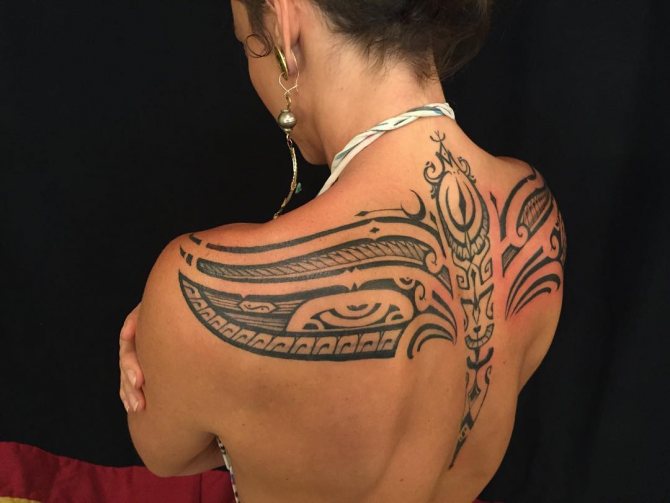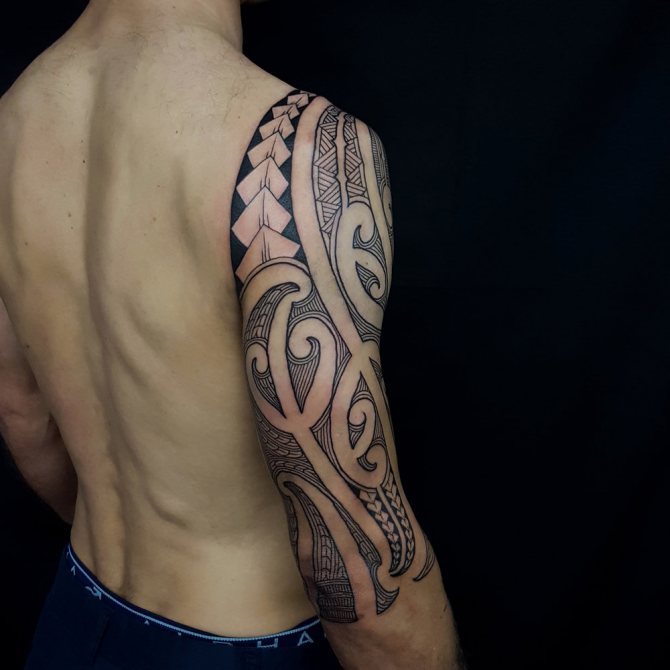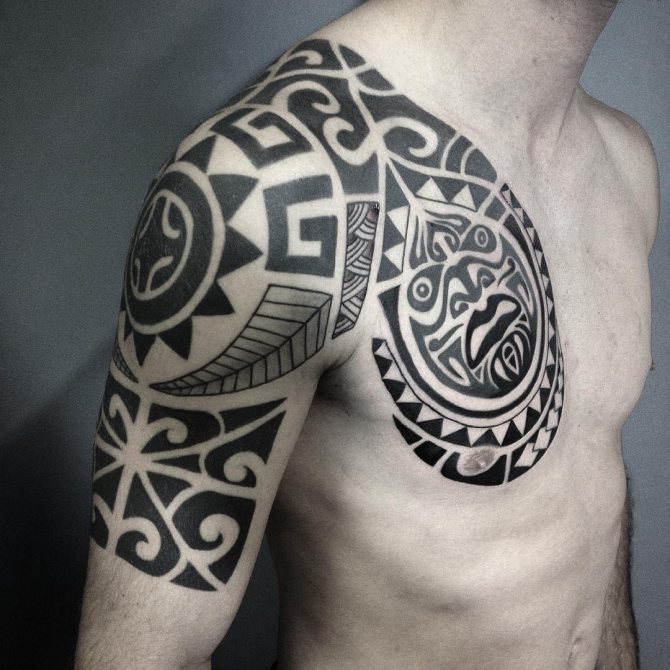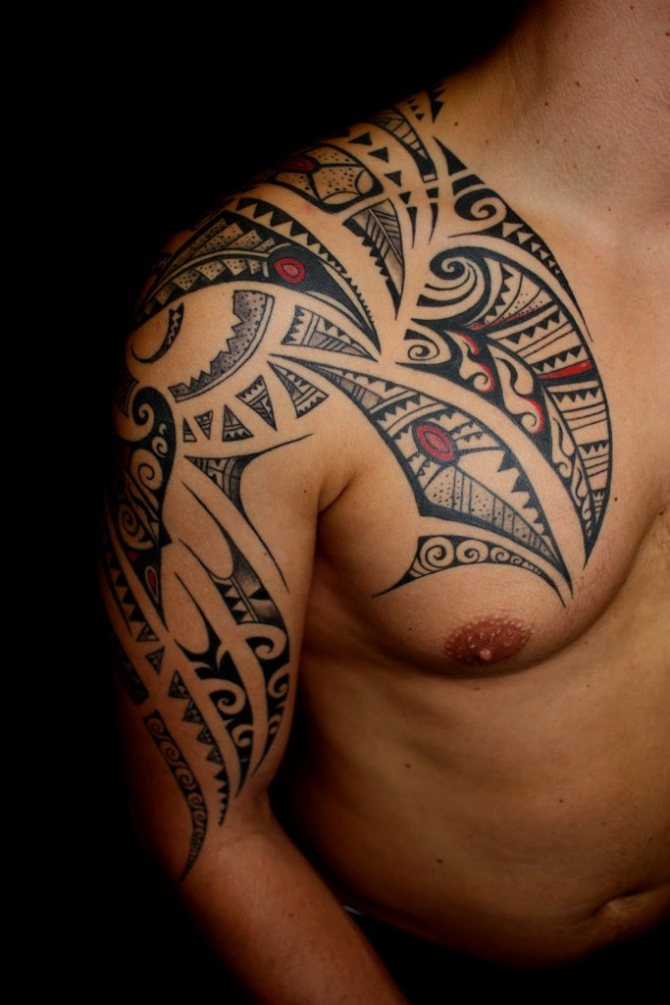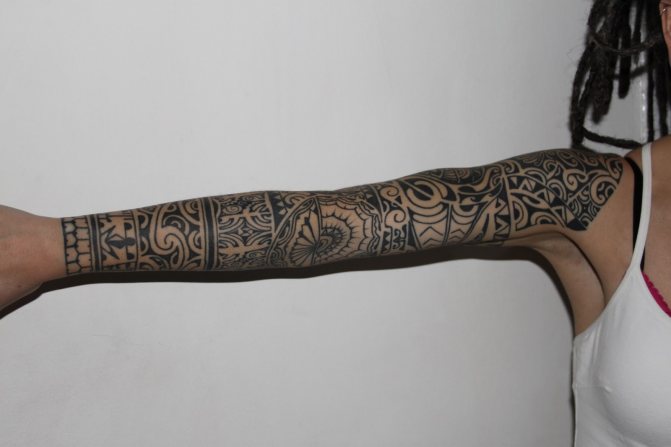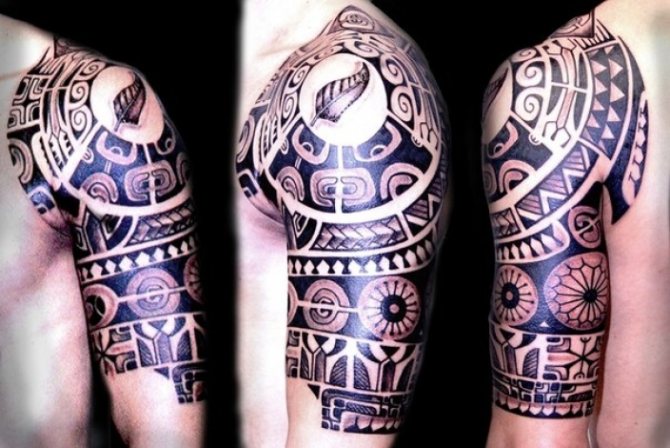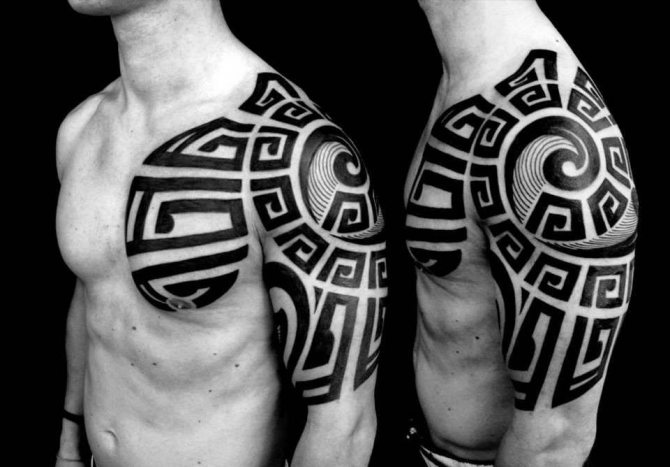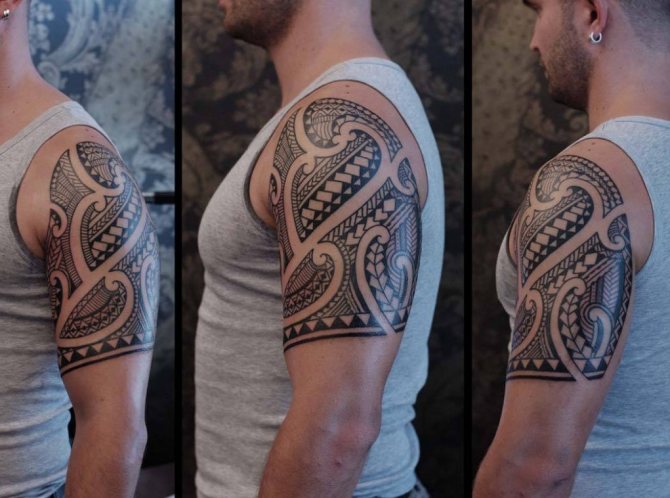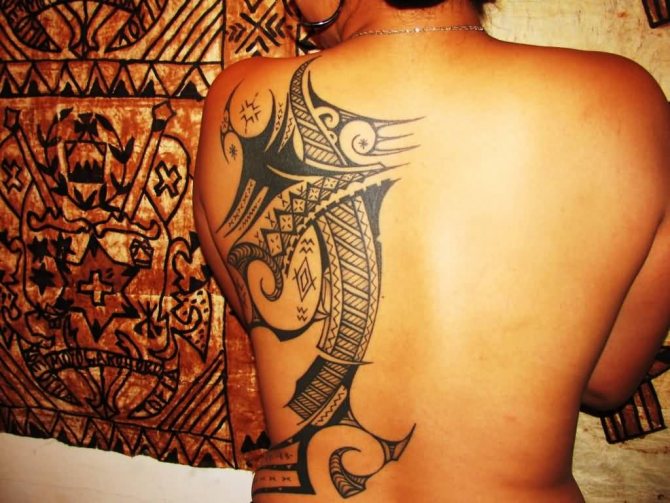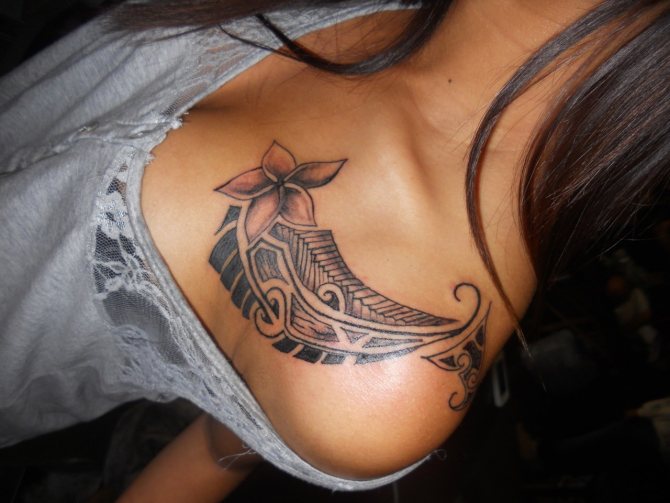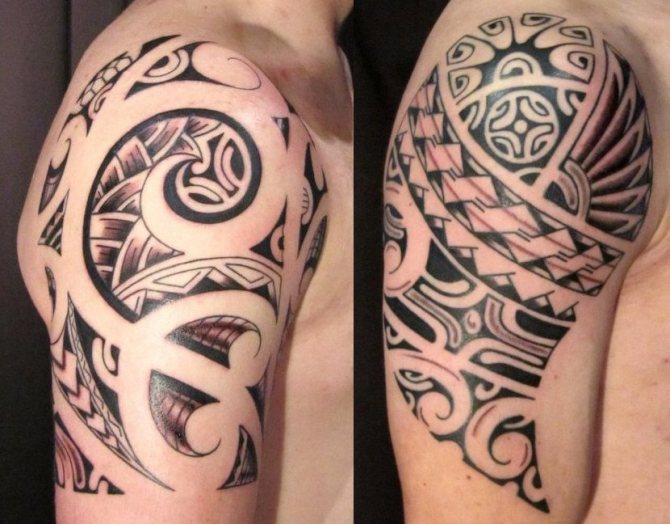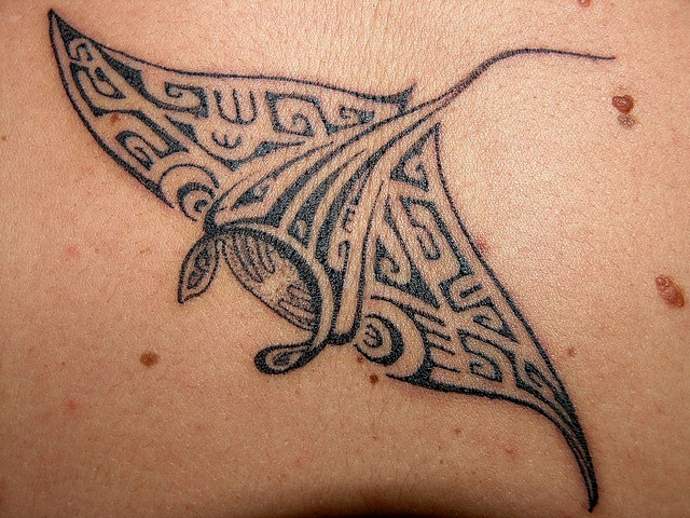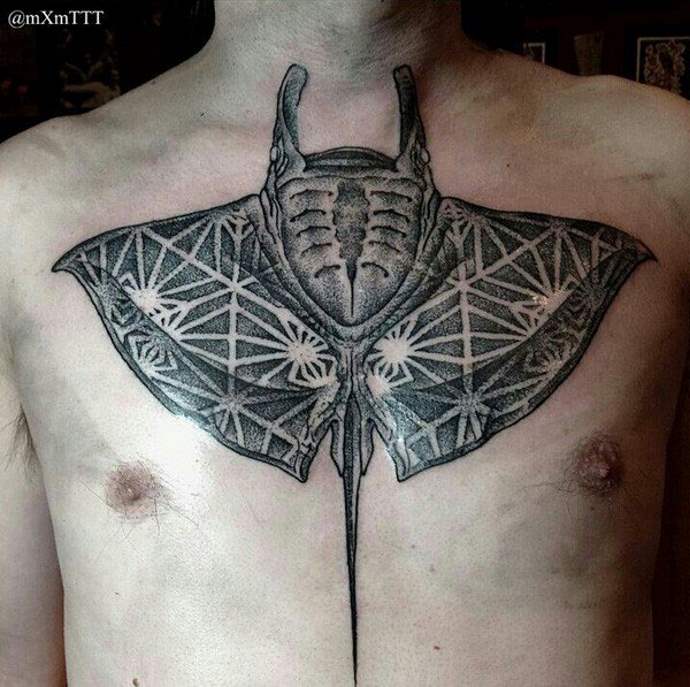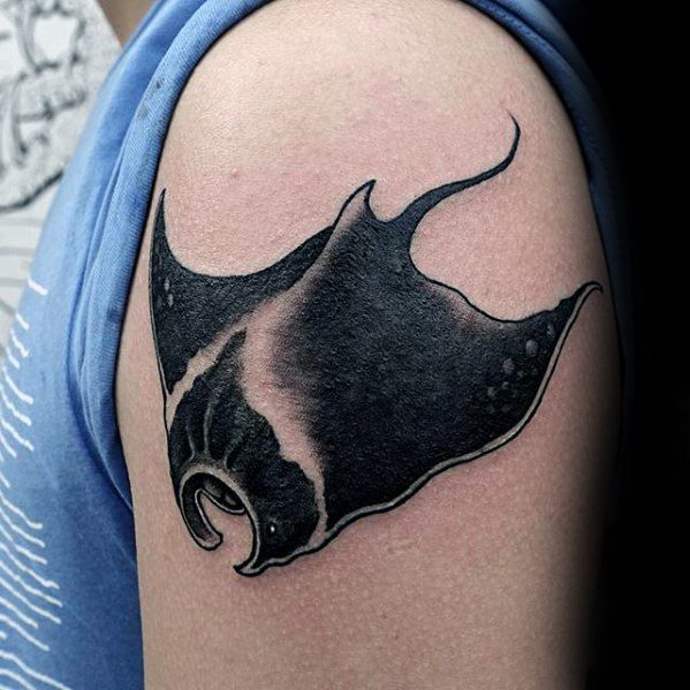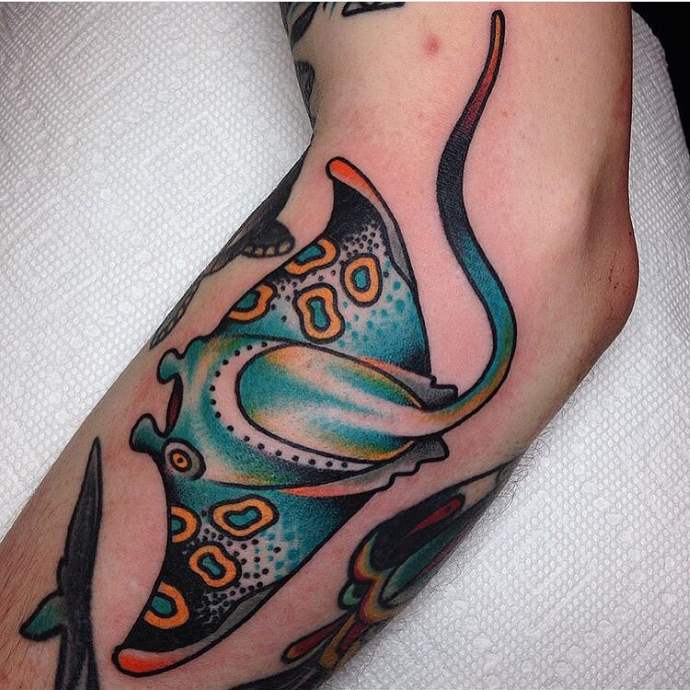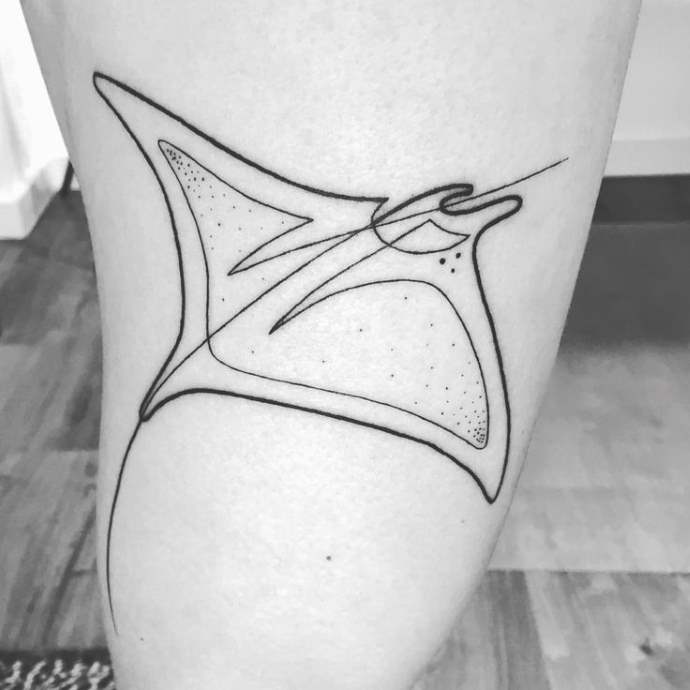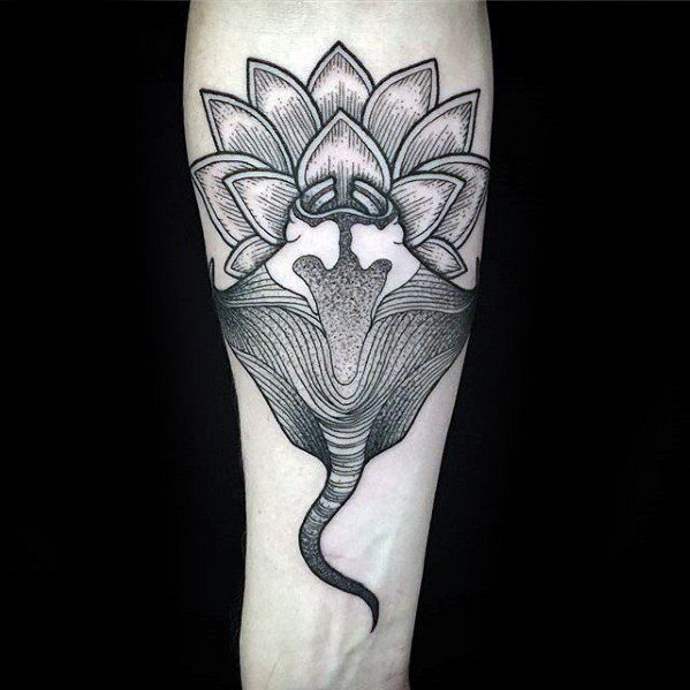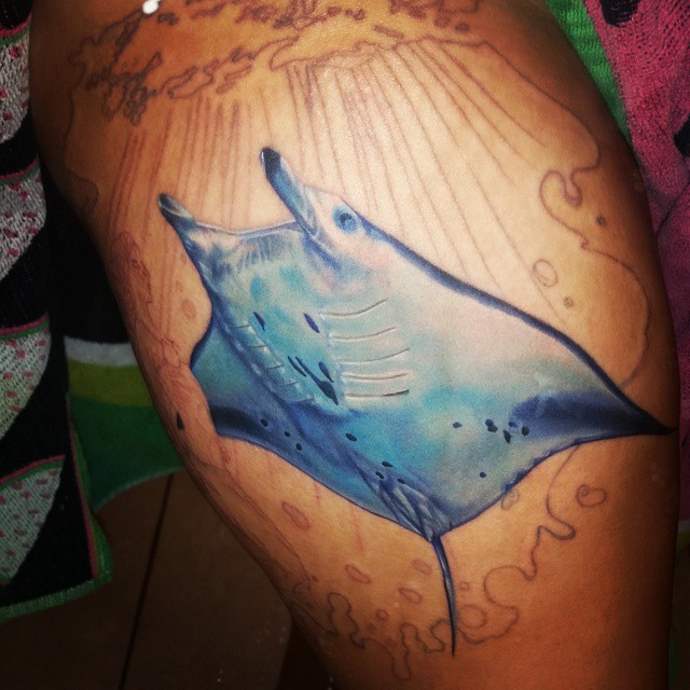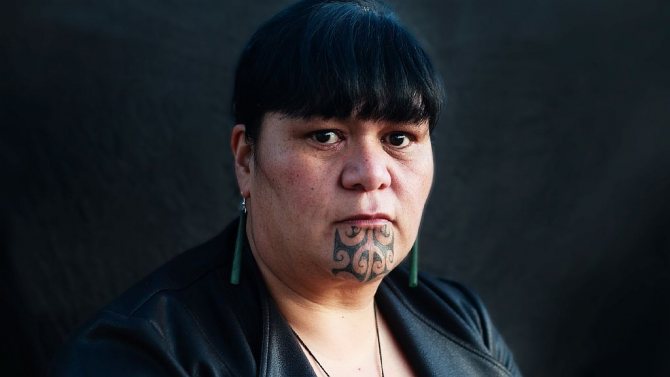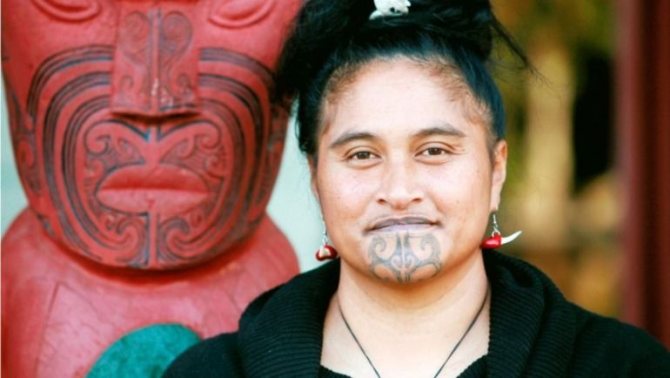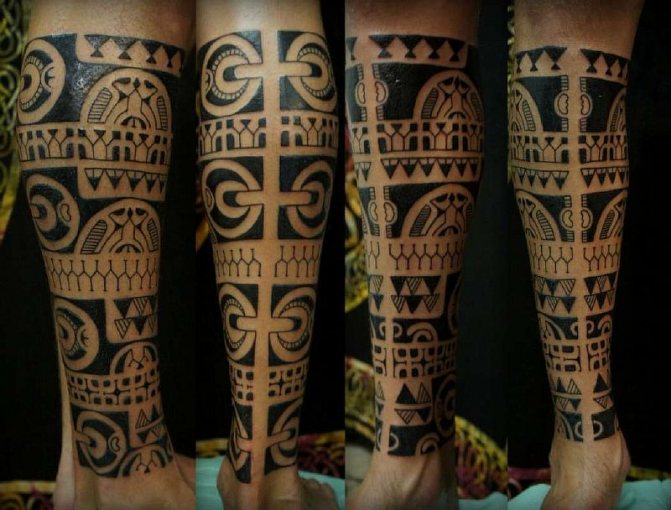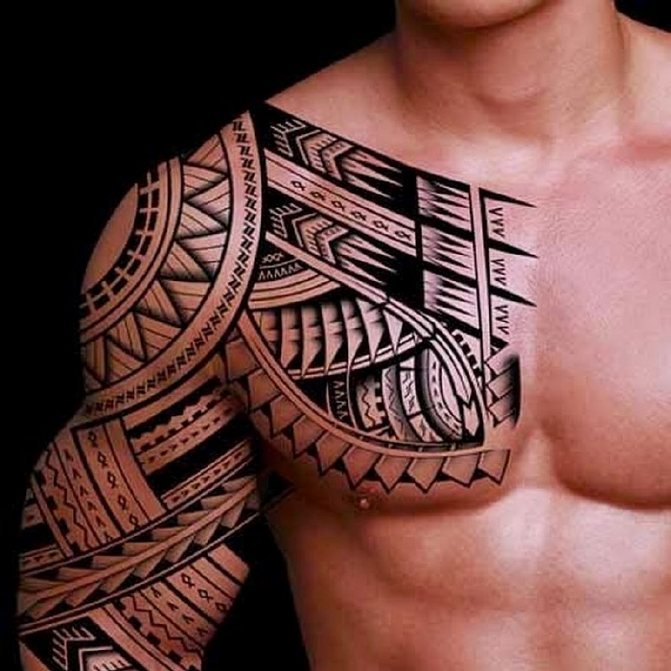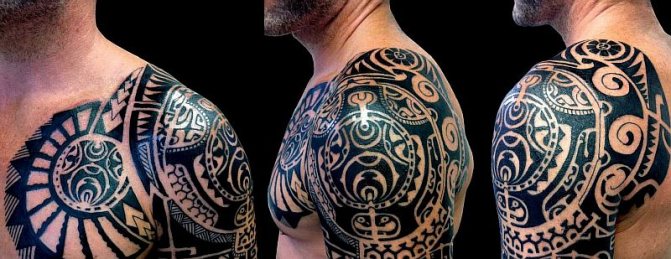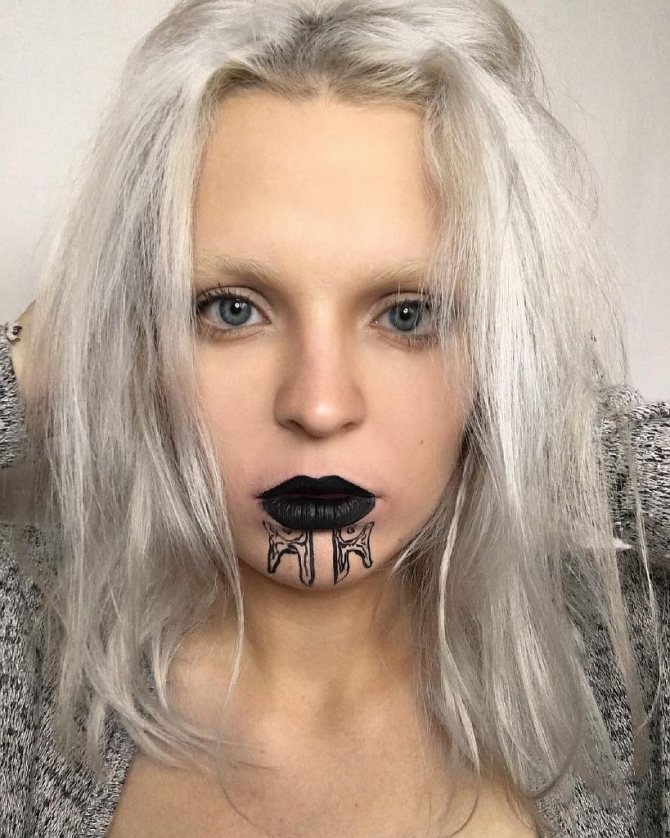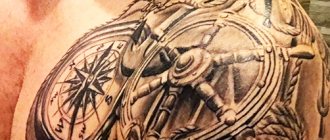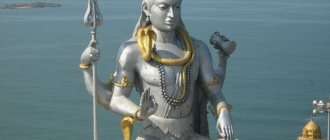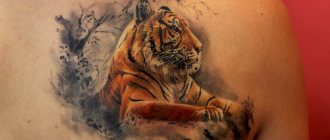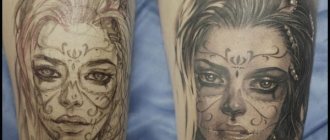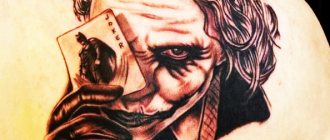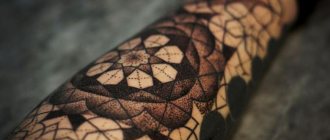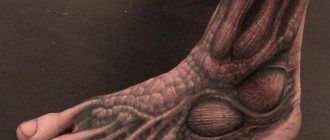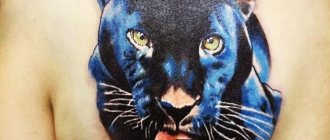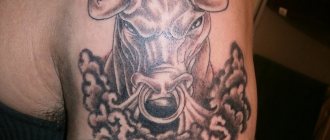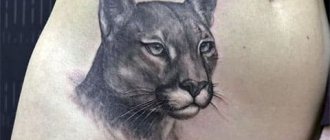Tattoo - body art, the history of which began more than five thousand years ago. People began to put the image of various objects and images on the body in order to protect themselves from evil spirits, using tattoos as amulets. The Polynesian style is one of the directions that is in demand even today.
Tattoos that are called Maori come from the tribe of the same name that lives on the islands of the Pacific. The history of the images goes far back in time and has a deep hidden meaning. Initially, tattoos were used to represent the status of their owner, which could be seen by everyone around.
The first to use body art were the chiefs of the Maori tribe, who used tattoos to gain courage and bravery, because at that time tattooing on the body was a very long and painful process. At the moment, the Maori tattoo is an original and bold solution, which refers to the Polynesian style.
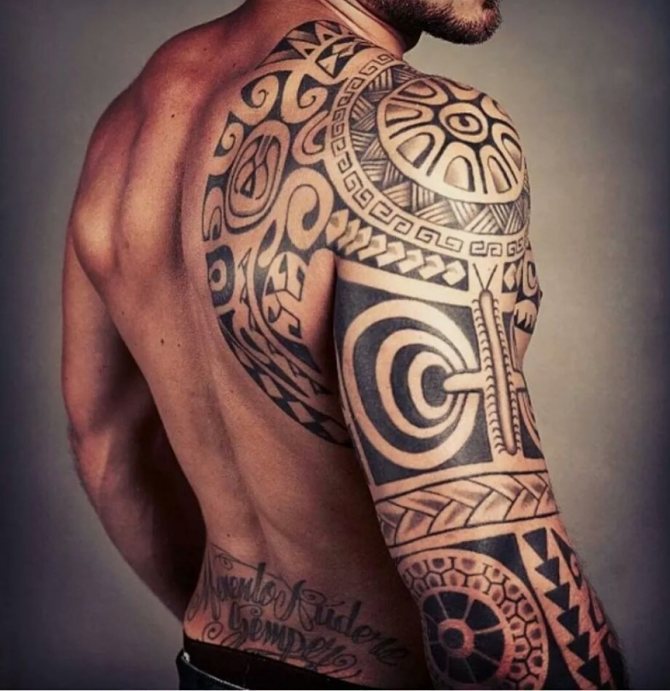
Why the Maori used to tattoo themselves
Maori style tattoos are named after the Maori tribe, the indigenous people of New Zealand. Aboriginal people needed body art to demonstrate status, reflect their character traits and the fact that they worshipped local deities. If there was no such design on the body, it was considered a mortal sin.
The Maori concentrated tattoos on the face. Warriors had patterns on their foreheads. Marital status was "read" by the patterns around the eyes. The right side of the face reflected the lineage of the mother, the left side the father. The cheeks were intended to indicate the occupation, and the patterns around the mouth and on the chin gave away the status of the wearer. In the course of life, new marks were placed on the arms, legs, back and chest to signify important milestones in life. By the time a person became an old man, his whole body was covered with drawings.
That's interesting.
Many centuries ago, the Maori used a knife and tools to make drawings on the body. Then a pigment made from fat and ash was poured into the wound. This technique resembles scarring.
How tattoos differ
"Maori", Polynesia, tattoo - these concepts are closely related. The drawings were always clear fine lines with well-drawn fine details. All of this added up to a chic pattern. Another important feature is the spiral arrangement of the ornament. The entire pattern unfolds around an invisible axis.
Only the priests were involved in tattooing in the tribe, because it was assigned to a sacred action, which could not have happened without the ministers of the cult.
Today, some of the most popular ornaments are Maori tattoos. Sketches exist in large quantities. You can pick out one you like and stuff it on any part of the body, regardless of the customs.
Peculiarities of the style, signs and symbols
Maori is characterized by massive "heavy" lines that are repeated cyclically. The predominant color is black. It is a distinctly ethnic style, which involves a system of signs and images. The most common ones are:
- The spiral - tells us that the person is faithful in friendship and in love;
- The lizard - helps to discover the hidden abilities of foresight, apply themselves people with high intelligence;
- skate fish - protects against negativity from the outside;
- sun - symbol of goodness, the relationship between life and death;
- shark - one of the most powerful amulets, which shows fearlessness before enemies;
- dolphins - protect against marine predators;
- turtle - balances character, prolongs life.
The entire human body is viewed by the Maori as a canvas. The pattern is applied from bottom to top. A person is painted from birth to old age. The result is an absolute abstraction using clean lines and strict geometry.
Technique of execution
The Polynesian style will be most appropriate for images of marine themes. Sketches look spectacular thanks to fanciful patterns and ornaments. The composition is usually performed in the same color scheme. Red or shades of brown can be added to the black color. Such a tattoo will look equally beautiful on a large scale and on a small scale. Tattoo with a stingray on the back will be an attractive body decoration and a talisman for its owner. The image can also be done on a leg, foot or hand.
Interesting video
Photo selection
How to distinguish Maori style from Polynesian and Haida
Maori is considered in many treatises to be a sub-style of Polynesia. It is distinguished by the fact that it explicitly features images of animals, plants, and natural phenomena. Polynesian tattoo resembles the art of woodcarving.
Haida also has its own system of symbols, the drawings are larger, generously diluted in red and leave a feeling of "scattered". Animal images are realistic, unlike the Maori.
Every curl in the Maori is a reflection of the real world, translated into a system of signs. A distinctive feature of the tattoo is the cyclic nature of the image.
Can it be displayed or overlapped
The decision to get a Maori tattoo is a very important step. If a person has changed his life principles, it will be difficult for him to get rid of the tattoo. The abundance of black color and dense intricate twists is almost impossible to change to other elements. Overlap the pattern with a full fill of black, or deduce with a laser. The disadvantage of the style is that it does not tolerate alterations.
Practice shows that the deep sacred meaning of the Maori style tattoo is able to change consciousness. A man perceives himself as he is. There is usually no desire to change something in his appearance.
Interesting Facts
Stingrays are the most ancient inhabitants of the underwater world, the carpets of the underwater kingdom. These representatives of the order of platypodermic cartilaginous fish number about 340 species. Their size ranges from 14 cm to 6-7 meters. Dense skin can have many shades of color: from light yellow to black. The stingray can also change color, masquerading as its surroundings. On the upper side of the body are the eyes, on the lower - a wide mouth and gills. This fish reproduces by laying eggs with hard shell or by live birth.
The main feature of the stingray's body is that it is electrically charged. Many parallel plates connected in the form of batteries generate electricity. In case of danger, the stingray strikes its enemy with a powerful discharge. For sea creatures, this most often ends in death, for humans - long-lasting paralysis of the limbs. Also, some representatives of this species of fish on the back has a branch filled with poison. The famous naturalist Steve Irwin was killed by a poisonous spike right in the chest. However, the stingray is not considered an aggressive animal. He lives both in shallow water and at a depth of 3000 meters, has a nocturnal lifestyle. Small stingray feeds on octopus, crabs, mollusks, and large - many kinds of fish. This flounder, cod, sardines and capelin. Stingrays live in the seas and oceans in almost all climatic zones.
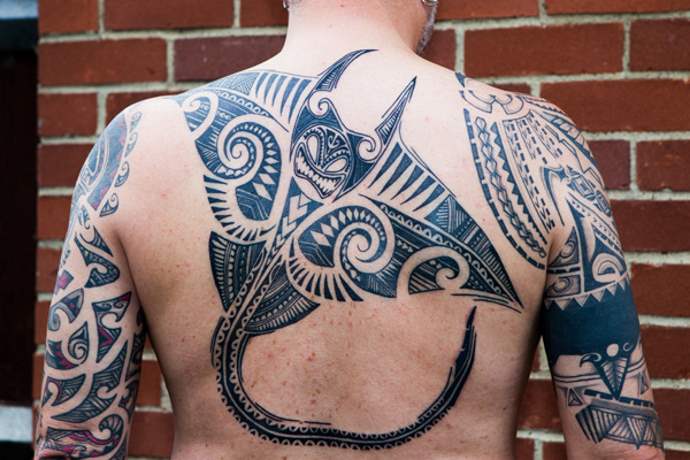

How much time to do a Maori tattoo
It is not necessary to rush the master of the tattoo, because the slightest hurry here is inappropriate and will lead to a distortion of the original plot. Stitching a Maori style tattoo on the outer upper arm can take 2-3 sessions. The price for such work varies from 10000 to 30000 rubles and more.
For care, use an ointment such as Bepanten, Solcoseryl. Of great importance is the timely treatment with chlorhexidine or myrmistine. Do not use antiseptics containing alcohol.
The plot, which was conceived originally, should be brought to an end. Otherwise the mystical meaning of the Maori amulets will be lost.
The most painful tattoo
According to tradition, before applying the Maori tattoo, the master must carefully study the person's face. This allows for an individualized picture to be made.
There is no catalog of images in tribal culture. Those who want a real tattoo, need to stock up on courage, as they will have to endure a lot of pain, which is an integral part of the ritual.


In the first stage, the master makes deep cuts in the skin, after which they are filled with ink.
These days, tattoos are applied to add a certain style or charm to an image. Masters are already using modern stabbing methods that are less painful. The toughest method you can try to experience the authenticity of the Maori tattoo. You can see the sketches in the photo.
Does it hurt to get these tattoos
Māori drawing has always been associated with pain. The tattoo was applied with a coarse chisel and hammer thus obtaining an incision in the skin. The degree of pain depends on the place of application and the style of the master. The sensitivity of a person and his or her mood play a role. Anesthesia is used as a last resort.
This is interesting
The indigenous peoples in New Zealand to this day, no one open the secret of the preparation of paint for tattoos, "proprietary" technology for the application of sacred images and the choice of places on the body.
The history of the origin of the style
In the past, the Maori tribe lived in eastern Polynesia.In the 13th century they settled on the expanses of the New Zealand Islands. In order to settle in a new place brave navigators had to sail more than one ocean mile in wooden canoes. Indians were not only fearless, but also extremely hardy, if you remember the history of the ancient tattooing process.
In the distant past, the pattern on the body was carved with a rough chisel from shark teeth or bird bones, which were struck with a mallet, resulting in cuts in the skin. The wounds were filled with colored clay or painted over with ash mixed with an oily substance. Ancient Maori accompanied this painful and long process with ritual dances and chanting, and it took more than one week to paint the body.
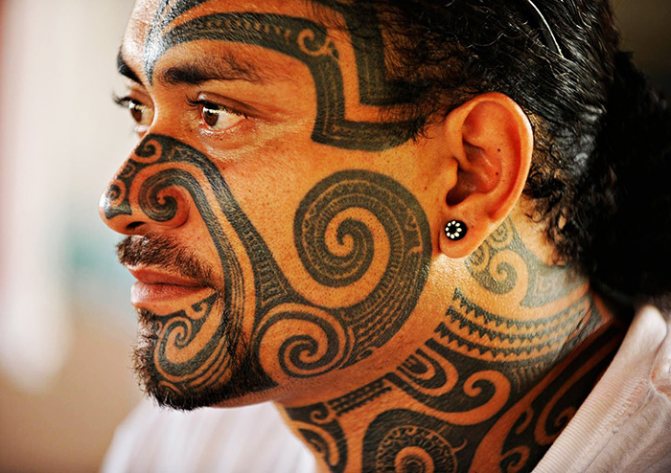

The Indians were not yet familiar with writing at that time. Therefore, to express themselves, they painted themselves with rock-type graffiti, either with militant symbols or signs of professional activities. For their own protection, they painted tattooed faces of their tribe's gods.
With the arrival of the first colonizers and the total conversion of wild people to Christianity tattoos fell under a ban. Then the aborigines began to hide their tribal tattoos from prying eyes.
From the point of view of modern artisans, applying Maori designs is a scarification technique. Only very brave tattoo fans dare to apply the painful procedure with scalpels or stamps.
What you should know before you go to the tattoo parlor.
The successful tattoo depends not so much on the choice of plot, as on the choice of the master. Patterns require clearly drawn lines and are often in exposed areas. Aesthetic work will simply ruin the life of the tattoo owner.
Tattoo masters have a strong energy, which is transmitted to the client. Before signing up for a session, it is advisable to spend some time in the salon, observe the work of the person to whom you will entrust your fate, get feedback from clients.
The youngest boxer of the WBC, WBA and IBF heavyweight titles Mike Tyson has several tattoos, one of them in Maori style located on his face. The boxer does not tell anyone about its significance.
Representatives of the Maori tribe believed that certain signs on the body helped to protect themselves from trouble and dangers in everyday life and while hunting. They believed that a good tattoo, made in the right place at the right time changes the fate for the better. Therefore, it is necessary to treat a tattoo with all responsibility and to be inwardly ready for the changes in life that it will bring.
Traditional tattooing locations
Tattooed pictures of the Maori style can visually enhance the relief of the male muscles. That is why men more often than women choose Polynesian patterns, placing them on the shoulder or in the area of the forearm.
Tattooists have developed a system of choosing patterns for different parts and areas of the body:
- A patterned bracelet covers small areas of the body;
- geometry with smooth lines placed on the forearm or shoulder;
- the lower leg is belted with a composition of circles, interlacing subjects;
- For the chest choose patterns with a circular fragment in the center.
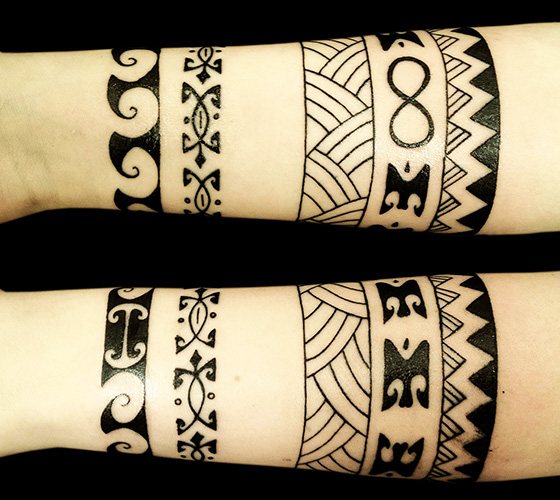

The tattooed sleeve from the top to the wrist is not so common, as it requires a long time to work with a large space. On such a feat are dared by few, modern lovers of body painting in the style of Maori give preference to concise, but at the same time beautiful drawings. Massive ta moko paintings are the traditional choice of indigenous islanders.
It is interesting that the super heavyweight and holder of many boxing titles Mike Tyson generously decorated his body with tattoos. On the face of the famous boxer you can see the symbols of Maori tattoo, the meaning of which he keeps secret.
The meaning of the location of the tattoo
Maori tattoo sketches are not just a decoration, but a subtle art, the meaning of which has remained unchanged since ancient times. The meaning of the unusual emblem depends on the place where it is located.
Today the Polynesian signs decorate the body, to paint your own face few fans of tattoo art decide. However, the meaning of the tattoo on the head as a sign of knowledge, wisdom, intuition, has remained unchanged.
The meaning of the zones in the sketches for the face:
- on the cheeks - displays the occupation of the bearer, the profession;
- On the forehead - the sign of the center of the zone indicates birth status;
- On the temples - marital status along with the number of children;
- around the nose and eyes - symbolism of belonging to a tribe;
- on the cheekbones and jaw - information about lineage (father, mother).
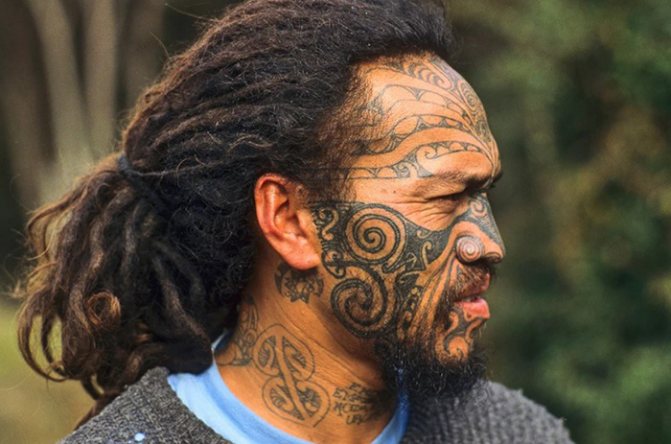

Above the upper lip, the personal emblem of the bearer of the tattoo was inscribed, the work on which was so painful that the person's mouth swelled and he could not eat for several days. For the male representatives of the islanders it was considered mandatory to cover the entire surface of the face with an ornament. The frightening coloring revealed all the data about its bearer (occupation, status, family) and was an identity card for a Maori man. Putting untruthful data on the face was punishable by death.
The deeper meaning of body art is connected to the energetic properties and character traits of the owner of the tattoo:
| Part of the body | The general meaning of the tattooed subject |
| On the chest | Drawings in this zone are associated with honor, show sincerity and generosity of the tattoo's owner. In the center is stuffed round element in the form of a sun or turtle, a mask. |
| On the back. | Protective symbols are placed here, guarding against enemies. The attacking ability of the shark or stingray is shown only to eliminate the danger. |
| On the shoulders and forearms | Sketches with signs located in this area of the body signal a strong and brave personality. Sleeve motifs usually consist of blocks filled with geometric figures. |
| On the palm and wrist. | The motifs tattooed in this area of the upper extremities are associated with creativity, the pinnacle of skill. The wrist is tattooed with an intricate bracelet pattern with many small details. |
| On the bottom of the abdomen | Tattoo Maori sketches, realized in the vicinity of the genitals, indicate a high sexuality, the ability to reproduction of the independent owner of a unique tattoo. |
| On the legs | The strength of the lower extremities is associated with travel. To make life's journey easy, the legs are decorated with a disk or spiral. A sprite will protect from traps along the way, and a lizard will give speed. |
It is interesting that Maori girls were also fond of tattooing - they tattooed their lips to preserve their feminine attractiveness. Women were allowed to have marks only on the lower part of the cheeks and on the lower lip, sometimes the back was painted on the islanders. Men could decorate the forehead, cheekbones, wings of the nose, the most popular in the past and present tattoos Maori on the legs.
Today it is important to take no less seriously the choice of place for a tattoo with deep meaning. After all, the signs have their own meanings, and the owner of the future tattoo, able to change the fate, wants to hide a personal secret in the picture.
For girls
Sketches in the spirit of the Maori, punched in clear accordance with the originally conceived plot, can change the mind of the owner, and girls are more prone to mysticism than guys. Women's Maori tattoos are symmetrical, performed in a black color scheme with strict adherence to the rules of geometry.
The tattoo locations are related to fertility and sexual preferences (abdomen, breasts, thighs), as well as the desire to look attractive:
- Triangular pattern on the back - the tops of the base corners are located on the shoulders, and the peak of the triangle goes down the spine to the buttocks;
- spiral pattern on the shoulder - more often begins near the neck, covering the head of the shoulder, goes down the arm all the way to the elbow;
- bracelet on the loin - consists of geometric fragments with scrolls, the tailbone is crowned by the central figure of the composition;
- The leg is decorated with wide strips of ornament, in the center of their ornate interweaving is a disk of the sun, the tattoo ends at the base of the toes;
- The thigh is covered with wide stripes, in the solid coloring of which patterns of geometric figures appear.
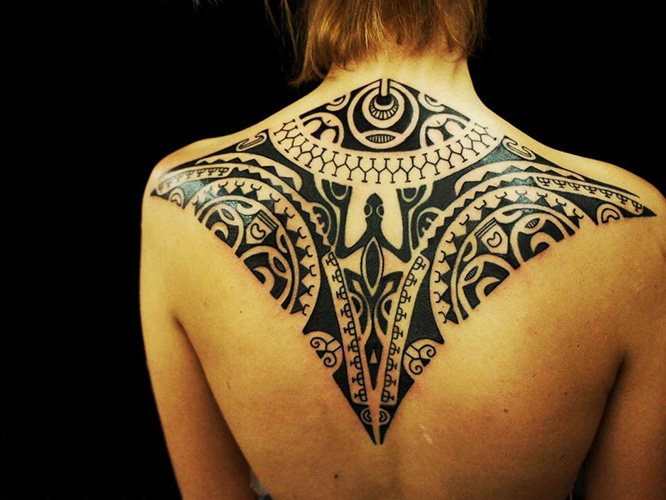

Maori tattoo on the back
Even today, you can find beauties with mystical Maori signs on their faces. For Polynesian girls, a tattooed "beard" below the tattooed lip was a sign of adulthood. The tattoo on the chin of 21st century girls is a tribute to youth fashion.
For men
Tattoo Maori sketches for modern tattoo fans around the world is an original way of protesting, although quite painful. However, representatives of the stronger sex are more tolerant of pain than girls. Therefore, brave guys still sometimes dare to decorate the face with a sacred ornament to demonstrate their own bravery.
What places on the body men choose to place tattoos in the Maori style:
- shoulder - The geometric pattern with spirals fully covers the head of the shoulder, slides down the forearm, but does not reach the elbow;
- men's sleeve - The black geometric pattern is twisted at the neck, going below the elbow, or the composition is printed on the area between the elbow and the wrist;
- male torso - ornament, centered with the gaping eyes of a tory mask, covers one side of the sternum, flows down the arm, ending at the wrist;
- feet - on the back surface of the calves of both legs are placed the same size tattoos, but with different faces of mystic masks;
- thigh - the unilateral pattern begins with a full sleeve, flows down the adjoining part of the torso, descends down the buttocks, girdling the leg all the way down to the bottom.


According to ancient Maori philosophy, the energy of the male body is related to the macrocosm (outward). At the same time, a woman's energy flow is directed inwards (microcosm), manifesting the ability to continue the lineage. Therefore, sketches for men are designed to strengthen the connection with the universe. Patterns are formed from duplicate blocks, providing a universal harmony of male energy.
Photo of the Maori tattoo
Other articles with similar themes:
- Abstraction style tattoos
- Features of the tattoo ...
- Tattoos by henna in...
- Tattoos in the style of...
- Tattoos in style...
- Tattoo master Alexander...
- Traditional tattoos in a...
- 50 cool male tattoos in ...
- Sketches for tattoos: sleeve ...
- Tattoo in the style of Linework...
- Tattoo in the style of ...
- Tattoo in the style of ...
- Music Tattoos
- Dota 2 Tattoos
- Guf tattoos
- Tattoos of singer Rihanna
- All of Conor's tattoos
- Interesting "book" tattoos
- The most dangerous tattoos
- The meaning of the eye tattoo
- Watercolor ...
- Tattoos by stories...
- Linkin Park Tattoos
- Meaning of the Sun Tattoo
- Tattoo History....
- Adrian Bascur Tattoos
- Women's Prison Tattoos
- History of criminal ...
- The stages of tattoo healing
- Rag'n'Bone Man....
